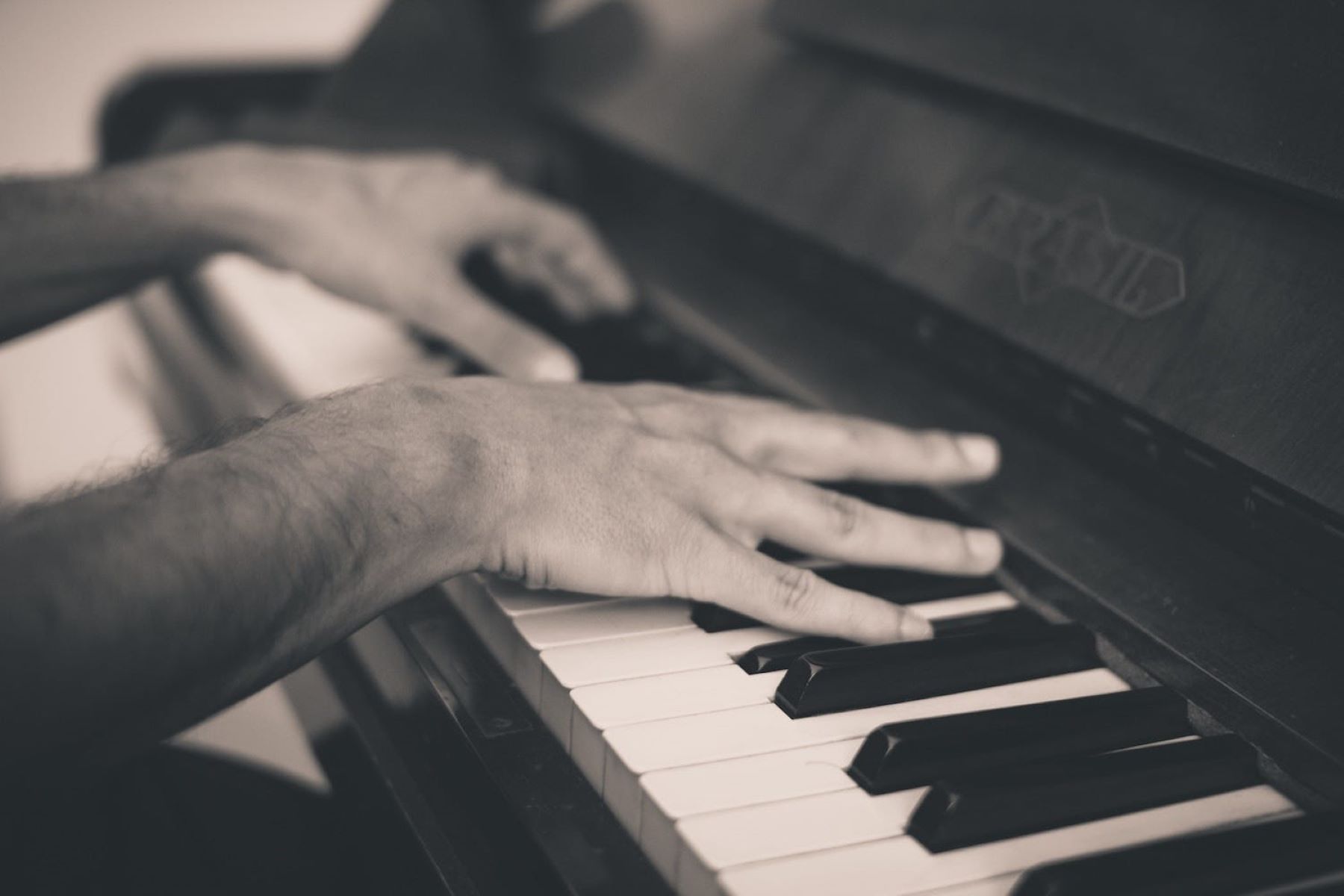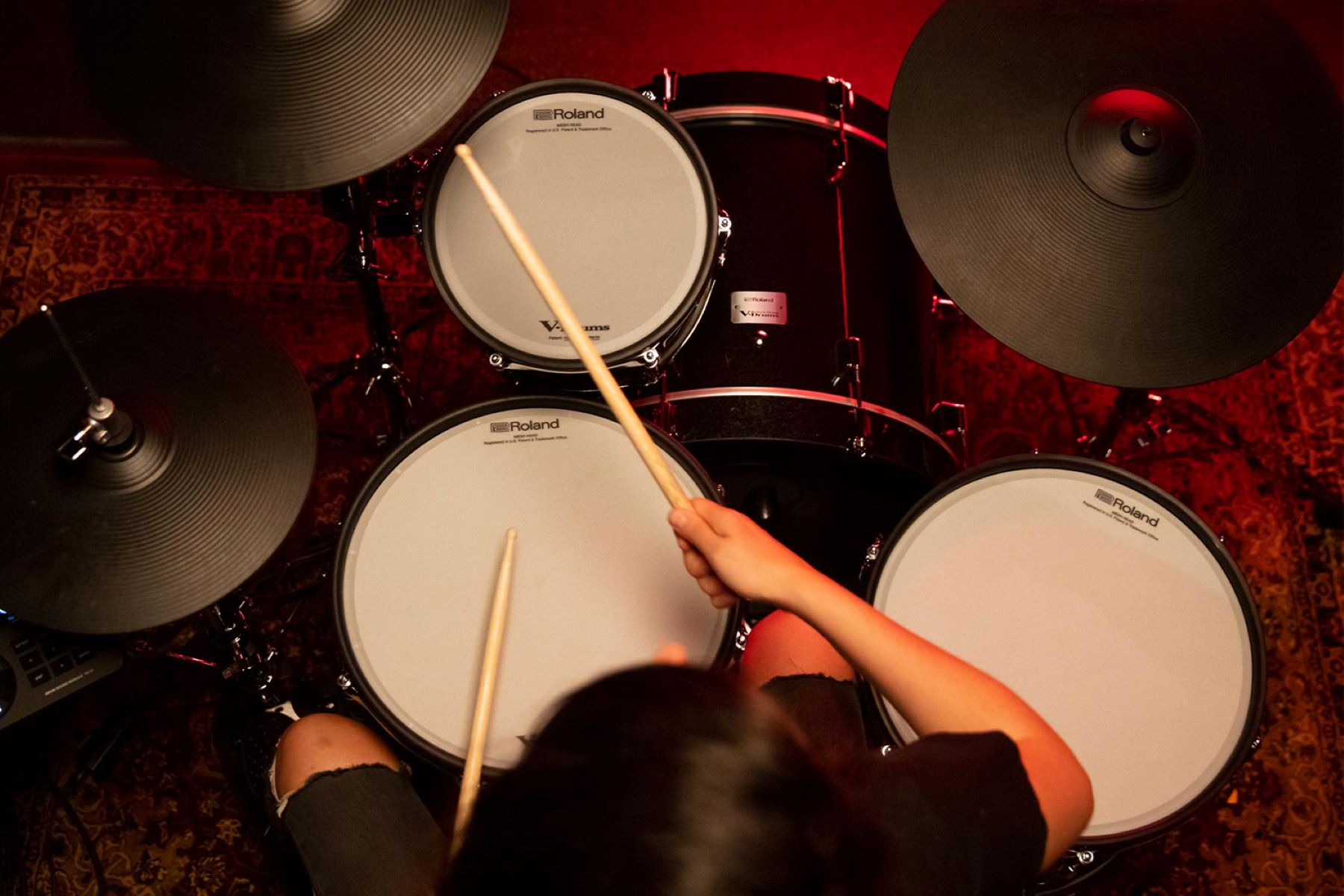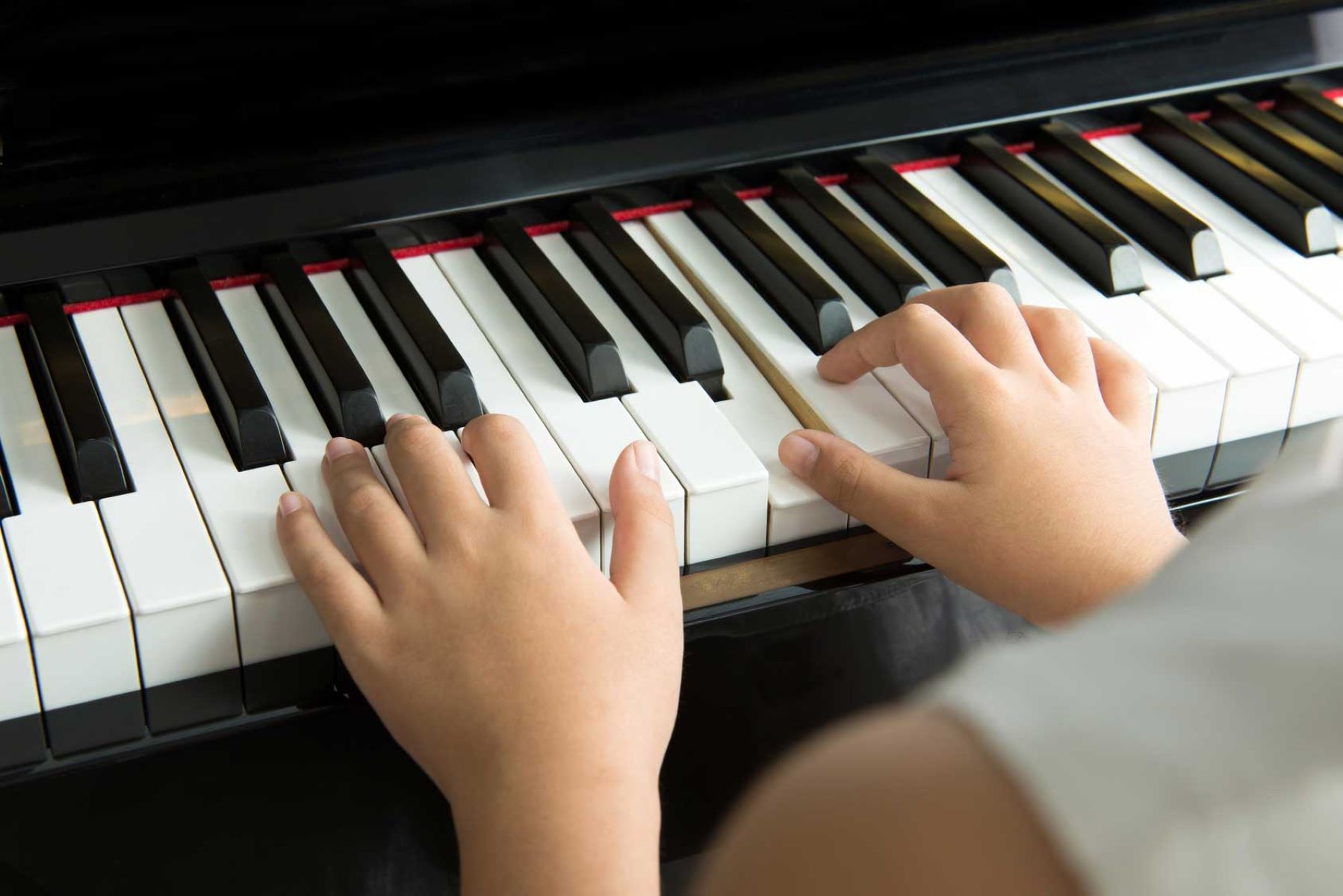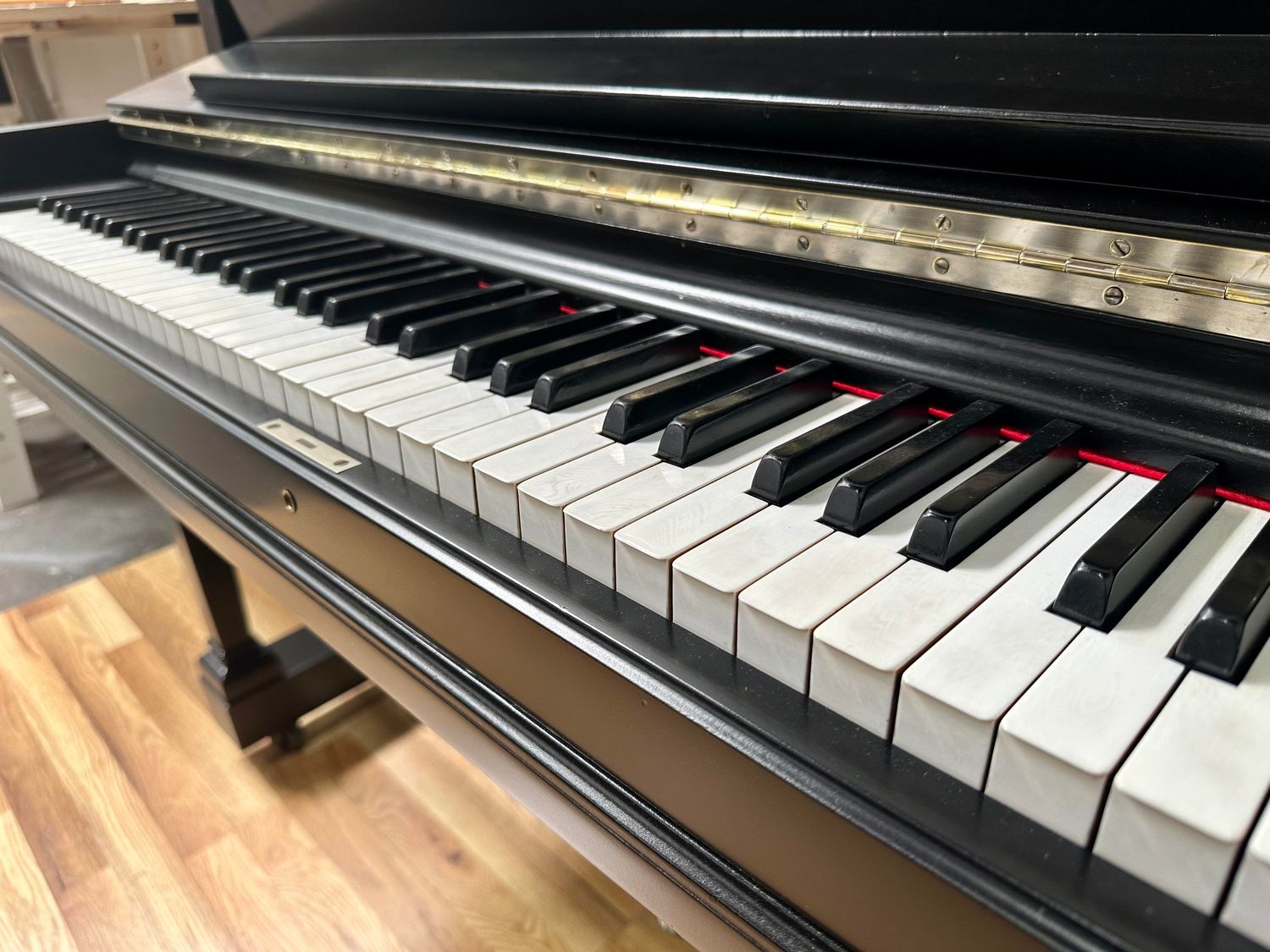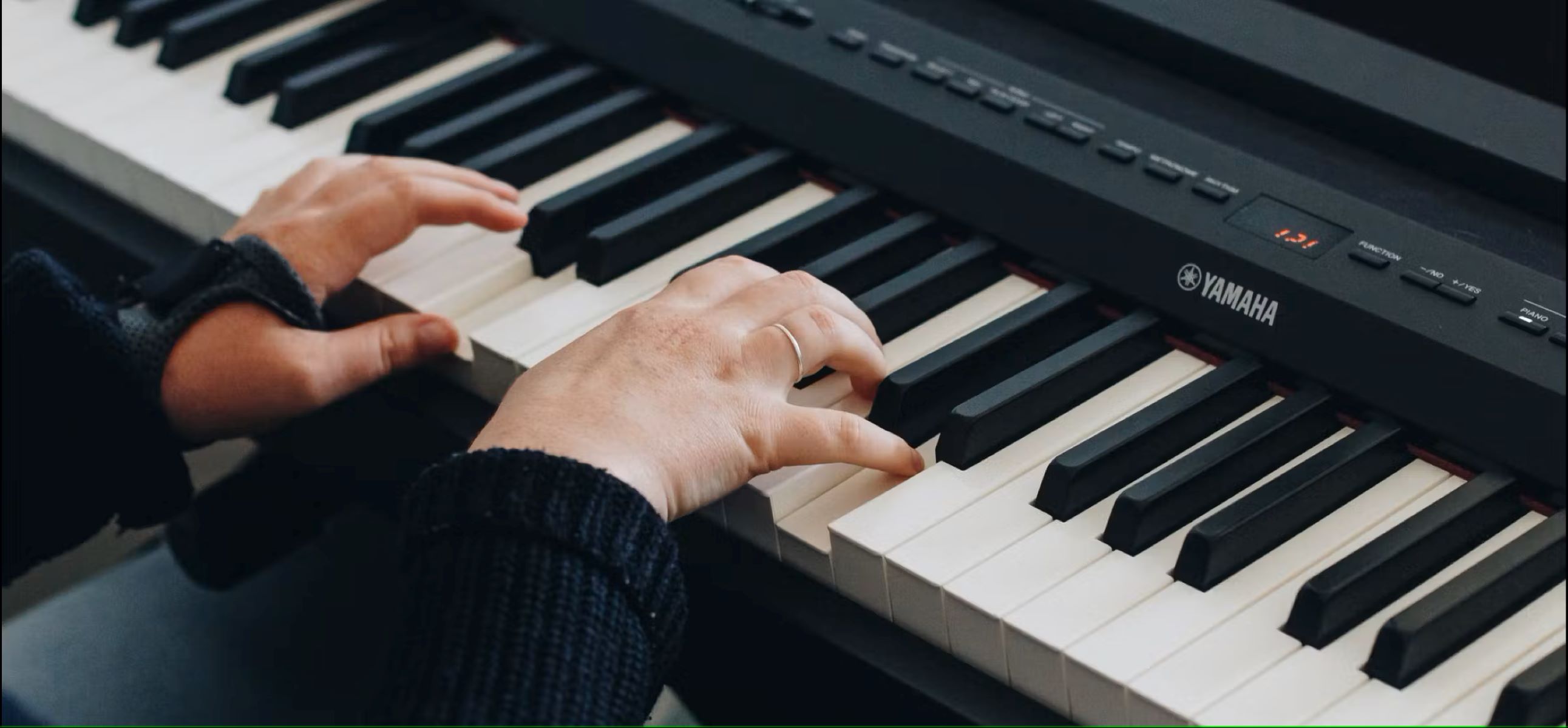Home>Instruments>Piano>How To Play Popular Songs On Piano


Piano
How To Play Popular Songs On Piano
Modified: February 18, 2024
Learn how to play popular songs on piano with our step-by-step tutorials. Master the art of playing piano and impress your friends with your skills. Unlock your potential with our comprehensive piano lessons.
(Many of the links in this article redirect to a specific reviewed product. Your purchase of these products through affiliate links helps to generate commission for AudioLover.com, at no extra cost. Learn more)
Table of Contents
Introduction
Playing popular songs on the piano is a fulfilling and enjoyable experience that allows you to express your creativity and connect with the music on a deeper level. Whether you're a beginner or an experienced pianist, learning to play popular songs can be a rewarding journey that enhances your musical skills and brings joy to both yourself and your audience.
Music has the power to evoke emotions, create memories, and inspire, and the piano, with its rich and versatile sound, is a perfect instrument for bringing popular songs to life. In this guide, we will explore the essential steps to help you play your favorite songs on the piano with confidence and flair.
As we delve into this musical adventure, we'll cover the process of choosing the right songs to learn, understanding basic piano chords, learning the melody, adding rhythm and style, and valuable practice tips to refine your skills. By following these steps and incorporating your passion for music, you'll be well on your way to impressing your friends and family with captivating piano renditions of popular tunes.
Get ready to embark on a musical journey that will not only expand your piano repertoire but also deepen your appreciation for the art of playing popular songs on this timeless instrument. So, let's dive in and discover the magic of bringing popular songs to life through the piano keys.
Choosing the Right Songs to Learn
When embarking on your piano-playing journey, selecting the right songs to learn is a crucial first step. Whether you’re drawn to classical masterpieces, contemporary hits, or timeless ballads, choosing songs that resonate with you personally will fuel your motivation and enthusiasm for learning and practicing.
Consider the following factors when selecting songs to learn on the piano:
- Personal Preference: Choose songs that you genuinely enjoy listening to. Your passion for the music will drive your dedication to mastering the piece.
- Complexity: Assess your current skill level and choose songs that align with your abilities. Beginners may opt for simpler melodies and chord progressions, while more experienced pianists can challenge themselves with intricate arrangements.
- Emotional Connection: Select songs that evoke strong emotions or memories. Playing music that resonates with you on a deeper level can enhance your performance and interpretation.
- Versatility: Explore a variety of musical genres and styles to broaden your musical horizons. Learning diverse songs will enrich your piano repertoire and expand your artistic versatility.
Additionally, consider exploring piano adaptations of popular songs, as many arrangements are tailored to suit pianists of varying skill levels. Whether it’s a contemporary pop hit, a timeless jazz standard, or a beloved movie soundtrack, there are countless resources available to help you discover piano-friendly renditions of your favorite songs.
By carefully selecting songs that resonate with you and align with your current skill level, you’ll set yourself up for an engaging and rewarding piano-learning experience. With the right songs in your repertoire, you’ll be inspired to dive into the next steps of mastering popular piano pieces.
Understanding Basic Piano Chords
As you venture into the world of playing popular songs on the piano, understanding basic piano chords is fundamental to your musical journey. Chords form the harmonic foundation of music, and mastering them will empower you to accompany melodies and create rich, captivating sounds on the piano.
Here are the essential components of understanding basic piano chords:
- Triads and Inversions: Begin by familiarizing yourself with triads, which are three-note chords consisting of a root, third, and fifth. Understanding chord inversions, where the notes of a chord are rearranged, will provide you with versatile voicings for smoother transitions between chords.
- Major and Minor Chords: Learn to distinguish between major and minor chords, as they convey distinct emotional qualities. Major chords often evoke a sense of brightness and optimism, while minor chords tend to convey a mood of introspection or melancholy.
- Seventh Chords: Explore the addition of seventh chords to your repertoire, as they introduce an extra layer of color and complexity to your piano accompaniments. Seventh chords can infuse popular songs with a jazzy flair or a soulful resonance.
- Chord Progressions: Delve into common chord progressions found in popular music, such as the classic I-IV-V progression, which forms the basis of countless well-loved songs. Understanding these progressions will enable you to navigate through popular song structures with confidence.
By developing a solid grasp of basic piano chords, you’ll gain the foundational knowledge needed to interpret and play a wide range of popular songs. Whether you’re accompanying a vocalist, playing in a band, or performing solo piano renditions, mastering basic chords will elevate your musical expression and bring depth to your piano performances.
As you familiarize yourself with these fundamental elements of piano chords, you’ll be well-prepared to infuse your piano renditions of popular songs with harmonic richness and expressive depth.
Learning the Melody
Mastering the melody of a song is a pivotal aspect of playing popular tunes on the piano. The melody serves as the heart of the music, carrying the recognizable and memorable motifs that capture the essence of the song. When learning the melody on the piano, you’ll delve into the art of interpreting and expressing the soul of the music through your performance.
Here are essential steps for learning and interpreting the melody:
- Melody Recognition: Begin by listening closely to the original recording of the song to internalize the melody. Pay attention to the phrasing, dynamics, and nuances of the melody to capture its essence.
- Hand Positioning: Familiarize yourself with the hand positioning required to execute the melody. Determine the optimal fingerings to navigate the melody smoothly and with precision.
- Expression and Dynamics: Infuse the melody with expressive dynamics, utilizing varying degrees of volume and articulation to convey the emotional arc of the music. Experiment with nuances such as staccato, legato, and accents to shape the melody’s character.
- Interpretation and Personalization: Add your personal touch to the melody, incorporating subtle variations and phrasing nuances to infuse the music with your unique artistic interpretation.
As you immerse yourself in the process of learning the melody, allow your musical intuition to guide your interpretation, capturing the essence and emotion of the song through your piano performance. Whether it’s a soaring vocal line, a poignant instrumental refrain, or a catchy hook, mastering the melody will enable you to convey the heart of the song through your piano rendition.
By honing your skills in interpreting and expressing the melody, you’ll bring popular songs to life on the piano, captivating your audience with the captivating and emotive essence of the music.
Adding Rhythm and Style
Infusing popular songs with rhythm and style is a transformative process that elevates piano renditions from mere reproductions to captivating musical interpretations. By incorporating rhythmic elements and stylistic nuances, you’ll breathe life into the music, creating dynamic and engaging performances that resonate with listeners.
Here are essential considerations for adding rhythm and style to your piano renditions of popular songs:
- Rhythmic Variations: Experiment with rhythmic variations to add flair and momentum to the music. Incorporate syncopated rhythms, off-beat accents, and rhythmic embellishments to infuse the performance with energy and vitality.
- Articulation and Phrasing: Explore diverse articulation techniques, such as staccato, legato, and accentuation, to shape the musical phrases and imbue them with expressive depth. Pay attention to the natural ebb and flow of the music, utilizing phrasing to convey emotion and musical nuance.
- Stylistic Interpretation: Embrace the stylistic elements inherent in the song’s genre. Whether it’s incorporating jazz-inspired improvisation, infusing a pop ballad with emotive sensitivity, or channeling the rhythmic vitality of rock and roll, adapt your playing style to suit the character of the song.
- Rhythmic Accompaniment: Explore rhythmic accompaniment patterns to enhance the song’s rhythmic drive and support the melody. Utilize techniques such as arpeggios, rhythmic ostinatos, and percussive chordal patterns to create a compelling rhythmic backdrop.
By integrating these rhythmic and stylistic elements into your piano renditions, you’ll transform popular songs into dynamic and engaging performances that showcase your musical artistry. Whether you’re interpreting a contemporary chart-topper, a timeless classic, or a beloved soundtrack theme, infusing rhythm and style will breathe new life into your piano renditions.
As you explore the interplay of rhythm and style in your piano performances, you’ll uncover the boundless creative possibilities for expressing the essence and character of popular songs through your unique musical interpretation.
Practice Tips
Effective practice is the cornerstone of mastering popular songs on the piano. By implementing strategic and focused practice techniques, you can enhance your skills, build confidence, and deliver compelling performances that captivate your audience. Here are valuable practice tips to elevate your piano-playing proficiency:
- Structured Practice Sessions: Organize your practice sessions into focused segments, allocating time for technical exercises, song repertoire, sight-reading, and ear training. Structured practice ensures a balanced and comprehensive approach to skill development.
- Slow and Steady Progress: When learning new songs, start at a comfortable tempo and gradually increase the speed as you gain mastery. Patient, incremental progress fosters precision and musicality in your playing.
- Isolated Technique Work: Identify challenging passages within songs and isolate them for focused technical work. Utilize scales, arpeggios, and exercises tailored to address specific technical demands encountered in the music.
- Expressive Interpretation: Infuse your practice sessions with expressive depth, focusing on dynamics, phrasing, and emotional connection to the music. Strive to convey the intended mood and character of the songs during practice.
- Consistent Review and Refinement: Regularly revisit previously learned songs to maintain proficiency and refine your interpretations. Ongoing review ensures that repertoire remains polished and performance-ready.
- Performance Simulation: Incorporate performance simulation into your practice routine by playing for friends, family, or recording yourself. Performing in a simulated setting cultivates confidence and prepares you for live performances.
- Mindful Listening: Engage in active listening to diverse musical styles, including the songs you’re learning. Analyze performances by renowned pianists, absorb stylistic nuances, and draw inspiration from varied interpretations.
By integrating these practice tips into your routine, you’ll cultivate a disciplined and effective approach to mastering popular songs on the piano. Consistent and mindful practice will not only refine your technical skills but also nurture your artistic expression, allowing you to deliver captivating and polished piano performances.
As you embrace these practice strategies, you’ll embark on a fulfilling musical journey marked by continuous growth, artistic refinement, and the joy of bringing popular songs to life through your piano mastery.
Conclusion
Congratulations on embarking on a musical odyssey to master popular songs on the piano. Throughout this guide, we’ve explored the essential steps to empower you on this captivating journey, from choosing the right songs to understanding basic piano chords, learning the melody, adding rhythm and style, and incorporating effective practice techniques. By embracing these foundational elements and infusing them with your passion and creativity, you’ll unlock the potential to deliver captivating and expressive piano renditions of your favorite songs.
As you navigate the world of popular piano music, remember that each song presents a unique opportunity for artistic interpretation and expression. Whether you’re drawn to the timeless melodies of classical compositions, the infectious hooks of contemporary hits, or the evocative themes of cinematic soundtracks, the piano serves as your canvas for musical storytelling.
By selecting songs that resonate with you, honing your understanding of chords, mastering the melody, infusing rhythm and style, and approaching practice with diligence and mindfulness, you’ll cultivate a rich and versatile piano repertoire. Your dedication to the craft will not only enhance your technical proficiency but also deepen your musical sensitivity and expressive prowess.
As you embark on this enriching musical endeavor, embrace the joy of discovery, the thrill of artistic expression, and the transformative power of music. Whether you’re playing for your own enjoyment, sharing your music with friends and family, or captivating audiences on a larger stage, your piano journey is a testament to the universal language of music that transcends boundaries and resonates with the human spirit.
So, as you sit at the piano, let the music flow through your fingertips, infusing each note with your unique musical voice. Embrace the nuances, the emotions, and the stories woven within the melodies, and allow your piano renditions to ignite the hearts and imaginations of those who listen.
May your musical voyage be filled with inspiration, growth, and the sheer delight of bringing popular songs to life through the timeless and enchanting art of piano mastery.



